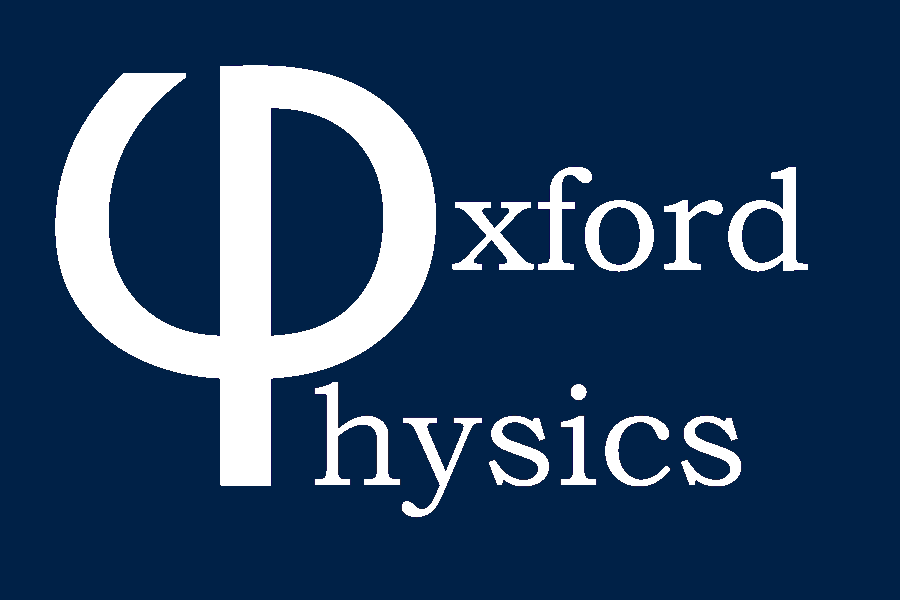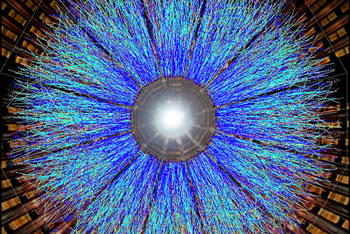Holography Seminar
Time and place: Tue 2-4 pm, room 501 (Seminar Room), DWB (additional seminars and non-standard time/place are listed in bold)
Michaelmas Term 2015 Talks:
- 13/10/2015: No seminar: group meeting
- 20/10/2015: Ville Keranen (U.Oxford): Thermalization of two point functions in the AdS/CFT duality
Material: SlidesAbstract: In the AdS/CFT duality, certain types of quantum quenches in the boundary theory are dual to spacetimes where a black hole forms through collapse. In this talk we will explain this connection by reviewing an analytically tractable example of this process. Then we move on to compute two point functions in such a collapsing spacetime. The two point functions are found to relax to thermal equilibrium with a rate set by the lowest quasinormal mode of the corresponding field. We will try to explain why this happens. Finally we define an effective occupation number, motivated by the fluctuation dissipation relation in thermal equilibrium, and study how that thermalizes in this system.
- 26/10/2015 (Monday, 5-7 pm, Conference Room, DWB): Harvey Reall (U.Cambridge): Causality in Lovelock theories of gravity
Abstract: Lovelock theories of gravity (e.g. Einstein-Gauss-Bonnet) are an interesting alternative to General Relativity in higher dimensions. They have the unusual property that gravity can travel faster or slower than light so causality is not determined by the light cone of the metric. I will explain how causality is defined by characteristic hypersurfaces and discuss some examples in which these hypersurfaces can be determined. I will discuss problems with arguments asserting that faster than light propagation implies causality violation. In particular, I will show that small black holes in Einstein-Gauss-Bonnet theory cannot be boosted arbitrarily close to the speed of light, which prevents one from building a time machine in this theory.
- 27/10/2015: Alexander Krikun (U.Leiden): Phases of holographic d-wave superconductor
Abstract: Exploring the phase diagram of the holographic d-wave superconductor we study various solutions to the classical equations of motion in this model. Apart of the known d-wave superconductor phase we find the two distinct spatially modulated solutions which exhibit charge density wave and a new homogeneous solution, which is characterized by the polar time-reversal-odd vector order parameter. The thermodynamic treatment reveals that the latter solution is always dominant, while the other phases are thermodynamically unstable. This study can be relevant to the conceptual description of the phase diagram of cuprate superconductors.- 03/11/2015: No Seminar
- 10/11/2015: No Seminar
- 17/11/2015: Francesco Aprile (U. Southampton): Geometry and Entanglement in Type IIB Holography
Material: PaperAbstract: I will discuss the holographic entanglement entropy in BPS multi-centered p-brane solutions and bubbling geometries. Focusing on the p-brane geometries, these backgrounds provides examples of large-N RG flows in which UV degrees of freedom rearrange across spacetime and field theory space. The codimension-2 Ryu-Takayanagi surface gives a sharp characterization of such RG flows. In particular, through the formation of a separatrix, it detects topology changes of the internal space. This separatrix defines at each energy scale the common boundary between different pieces of geometry, it is a dynamical object and "mediates" interactions. I will show how this entangling structure is understood in the dual field theory, and how it can be used to refine the notion of separability/connectivity of an RG flow. Bubbling geometries can be analyzed with the same geometric tools.- 24/11/2015 (Conference Room): Nabil Iqbal (U. Amsterdam): Anomalies of the entanglement entropy in chiral theories
Abstract: Certain two-dimensional field theories are afflicted by gravitational anomalies, which implies a non-conservation of stress energy under certain situations. I will discuss universal properties of entanglement entropy in such theories and explain from several points of view how the notion of entanglement entropy now becomes frame-dependent. When such theories have a dual gravitational description, I will explain how the effect of the anomaly is to widen the Ryu-Takayanagi minimal worldline into a “ribbon" whose twist carries non-trivial information. Finally, I will briefly discuss the situation in four dimensions, where the mixed gauge-gravitational anomaly can play a similar role.- 01/12/2015: Ben Withers (U. Cambridge): Self-similar equilibration of strongly coupled CFTs from holography
Abstract: We join two semi-infinite asymptotically AdS black branes of different temperatures, which subsequently equilibrate by emitting gravitational radiation towards the boundary of AdS. Through the AdS/CFT correspondence the solutions describe the equilibration of different CFT states. At sufficiently late times the solution converges to a similarity solution, which is only sensitive to the left and right equilibrium states and not the details of the initial conditions. This attractor solution not only incorporates the growing strip of equilibrated plasma, but also the outwardly-propagating transition regions, and can be constructed by solving a single ODE.- 08/12/2015: Jiunn-Wei Chen (National Taiwan U.): Can Entanglement Entropy Be a Finite Quantity?
Abstract: I will introduce the basic idea of entanglement entropy and how it can be computed on field theoretical systems such as the phi^4 theory and QCD. I will further show that by putting counterterms allowed by symmetries of the theory in the interface between two entangled regions, the entanglement entropy becomes finite. This aspect of renormalizability was not realized in the past.If you are interested in presenting your research in Oxford, please contact Jonas Probst.
For a list of past talks follow this link.
The following might also be of interest:
- A weekly updated list of talks related to string theory.
- A list of all seminars in the Physics Department, including the Theoretical Physics Colloquium and the Particles and Fields Seminar.
- 27/10/2015: Alexander Krikun (U.Leiden): Phases of holographic d-wave superconductor

